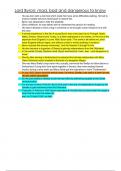Lord Byron: mad, bad and dangerous to know
- He was born with a club foot which made him have some difficulties walking. He had to
endure multiple torturous techniques to restore this
- Byron was desperate to hide this disability
- Since childhood, he was defiant yet he maintained his passion for reading
- He wasn’t allowed to have a dog in university so he brought a bear instead in line with
the rules
- A pivotal experience in the life of young Byron was a two-year trip to Portugal, Spain,
Malta, Greece, Albania and Turkey. In a letter addressed to his mother, on the eve of his
departure from England, in June 1809, Byron said: “The world is all before me, and I
leave England without regret, and without a wish to revisit anything it contains.”
- Byron enjoyed this journey immensely, and the freedom it brought to him
- He also became a supporter of Greece's gaining independence from the Ottomans.
- In the words of Lady Caroline Lamb, Byron had become “mad - bad - and dangerous to
know.”
- Shortly after arriving in Switzerland, he restarted his intimate relationship with Miss
Claire Clairmont which resulted in the birth of a daughter, Allegra.
- She was Mary Shelly's step-sister who, actually, convinced the Shellys to follow Byron to
Switzerland. During their time spent together in Geneva, they were reading German
stories, during a rainy week, and Mary Shelly got the inspiration to write "Frankenstein."
- In July 1822, Byron received terrible news: his friend, Shelley, had died in a storm at sea.
He was utterly devastated.
- So the poet sailed to Greece to join the war effort by delivering supplies to the Greek
revolutionaries.
- For the last months of his life, Byron took part in the war of independence fought by the
Greeks to gain autonomy from the Ottomans.
- Tragically, in February 1824, Byron was taken ill. His life was cut short when he caught a
fever that he could not shake off,
and, on 19 April 1824, he died.




